Sony Cyber-shot DSC-T10 Review
Sony Cyber-shot DSC-T10
Sony's latest digital compact camera certainly looks the business, but beauty is only skin deep.
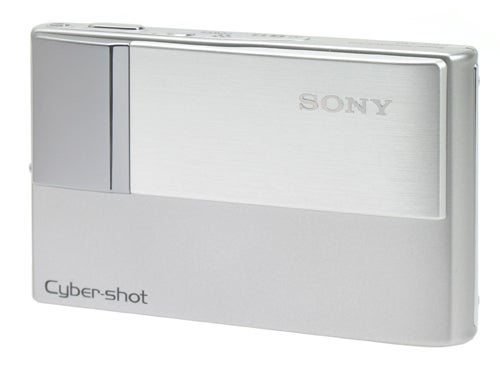
Verdict
Key Specifications
- Review Price: £211.00
Last week Cliff looked at the Canon Ixus 850 IS and today I’m putting Sony’s similarly specced Cyber-shot DSC-T10 through its paces. Both cameras are light, pocket friendly and beautifully made, so how does Sony’s new baby compare with arch-rival Canon’s?

First off I have to say that the T10 is an absolutely beautiful piece of kit. Just holding the T10 in your hand feels good – like the Canon Ixus, the T10 is constructed from metal and has a very solid feel to it, as well as being pleasantly cool to the touch. The metal construction extends to the tripod mount, which is always good to see – it’s all too easy to cross thread a plastic tripod mount and completely destroy it. There’s a sliding lens cover on the front (also constructed from metal) – sliding this down reveals the Carl Zeiss f3.5–f4.3 lens and switches on the camera. The lens has a 3x optical zoom, which equates to 38 – 114mm in 35mm language, which is pretty average for a slim and light camera like this.
The T10 is pretty light at 162g, but still slightly heavier than the Canon Ixus 850 IS. That said, the Sony is definitely slimmer with dimensions of 89.7 x 54.9 x 20.6mm compared with 89.5 x 58 x 25.1mm for the Ixus. In fact it’s the shallow depth of the T10 that makes it particularly attractive and allows it to slip pretty unobtrusively into your pocket.
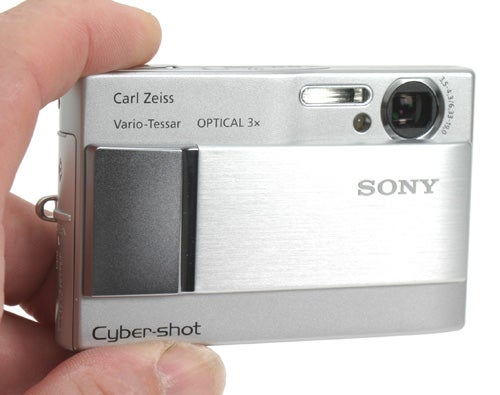
The rear of the camera is dominated by the 2.5in 230,000 pixel LCD. This is a great display with no perceptible lag no matter how quickly you pan around. The quality of the screen also makes reviewing captured images a pleasure rather than a chore. Sony has obviously realised that the screen on the T10 lends itself to image viewing and has included a slideshow option, complete with musical soundtrack and cheesy transitions.
Above the screen is a hard switch for selecting playback, photo and movie modes. At first I quite liked this approach, but then I realised that you couldn’t quickly switch back to shooting mode from playback mode by tapping the shutter button. However, you can review an image from within the photo mode too (although only the last one you took), and then you are able to flick back to shooting mode by tapping the shutter release. In the top right corner you’ll find the zoom controls and below this is an area for resting your thumb while holding the camera. Further down you’ll find a familiar four-way button configuration with a select button at the centre.
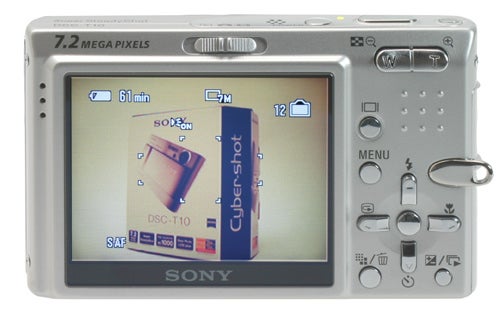
Also in evidence at the rear is a button for toggling the on-screen info on and off – this includes the remaining battery life, the number of megapixels currently employed, the amount of shots left on the MemoryStick and the folder in which the shots are being recorded. Another press of this button will bring up a live histogram – this is a bit of an odd feature if you ask me, considering that there is very little in the way of manual control on offer.
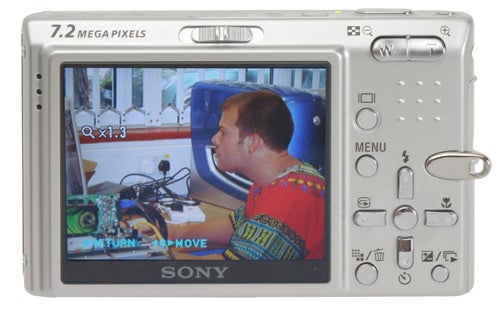
There’s also a Menu button and two shortcut buttons. The first shortcut will delete images when in playback mode and change the camera resolution when in shooting mode. The second shortcut button will activate the slideshow in playback mode and access the exposure compensation settings in shooting mode. Talking of exposure compensation, you get +/- 2 EV in 1/3 EV steps, which is pretty standard these days. Less standard is the fact that this is the only exposure control at your disposal, with no hint of shutter or aperture priority. This is a shame considering that Canon has been offering shutter speeds up to 15 seconds on its Ixus range for a couple of years now.
On the very top edge of the camera you’ll find a power button – in case you just want to view images and don’t want to expose the lens. Next to this is the shutter release button and finally there’s a button that toggles the Super Steady Shot feature – basically image stabilisation.
The Super Steady Shot is on by default, and it seems to work pretty well. Obviously the upshot is that you can take photos in low light without having to worry about camera shake, but it’s worth remembering that camera shake is only half the problem. If you’re subject is moving, then you’re still going to end up with a blurry image as the camera increases the shutter time.
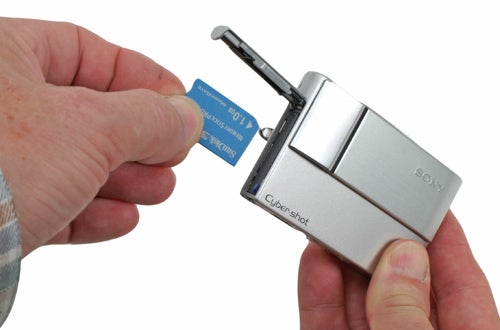
On the side of the body is a sliding hatch that houses the battery and MemoryStick Duo card. The battery is one of Sony’s excellent InfoLithium cells, that tells you how many minutes of battery life you have left. Sony quotes the battery life as 125 minutes, with 250 shots, although there’s no word on how often the flash was used for that number. There is no memory card supplied with the camera, but the T10 does have 56MB of internal memory to get going with. Although that’s not much memory by today’s standards, having run out of the office with my memory card still in my desktop card reader, I can appreciate the benefit of having even a modest amount of integrated storage.
Inside the T10 has a 7.2-megapixel CCD that will record images with a resolution of 3,072 x 2,304. There’s no option to record in an uncompressed RAW format, and the lowest compression setting gives you a file size of 2.8MB, which indicates that there’s still a hefty amount of compression going on.
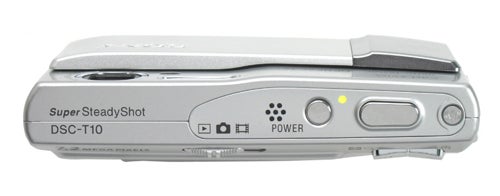
You can shoot movies at a resolution of 640 x 480 at 30fps. Once again the excellent LCD screen makes it easy to frame and track your subject while filming video. The zoom was particularly impressive when shooting video, providing very smooth movement. Video is recorded in MPEG1 format and you can choose between Standard and Fine modes, depending on the frame rate you require – Fine gives you the full 30fps, while standard drops that down to 16fps. You can also shoot at 160 x 112 at 8fps, in case you really want to keep the file size down. I did find the microphone to be slightly weak though, and unless someone was right in front of me when filming them, I couldn’t hear what they were saying – somewhat negating the zoom feature.
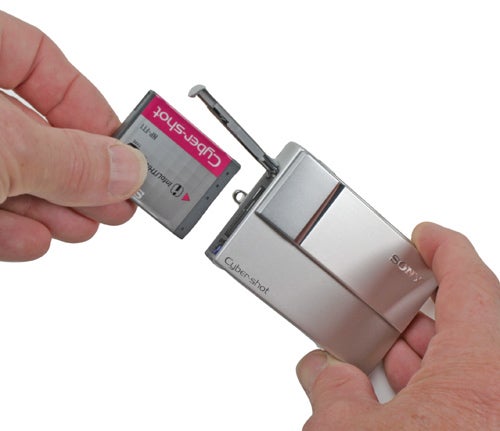
The T10 takes under two seconds to start up, and the fact that sliding the lens cover down turns it on means that you don’t need to fumble for a power button either. You should therefore be able to catch some of those classic moments that might otherwise be missed with another camera. But it’s not all great on the point and shoot front. I found that when I did grab the T10, flip the lens cover down and shoot, I ended up taking a photo of my finger! With the lens positioned in the far left corner of the body, I found that one of my fingers often strayed into the frame. I eventually had to modify my grip to avoid this problem, but I would have still preferred the lens to be more central.
The T10 features one of the most powerful flashes that I’ve seen in a compact camera, so much so that you risk washing out anything that’s too close to you, but in very low light it excels. Sony has also enabled the T10 to focus in pretty much total darkness with a superb AF illuminator allowing you to get pin sharp focusing no matter what the lighting conditions.
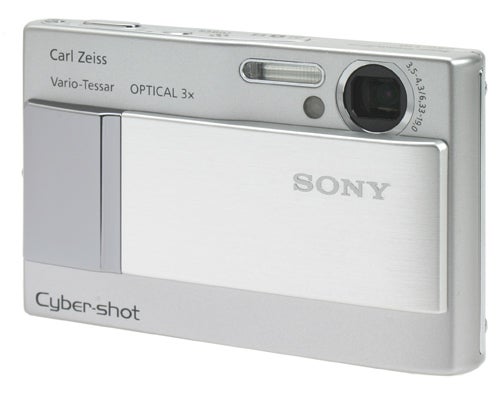
When in shooting mode the four-way pad becomes a series of shortcuts – pressing up toggles through the flash settings, pressing left lets you review your last shot, pressing down activates the self timer (with 10 and two second options), while pressing right gives you the macro option. Talking of the macro setting, you get a standard macro option and then a magnifying glass setting which will focus as close as 1cm.
Despite the lack of manual controls, the T10 has an impressive array of ISO settings ranging from 80 all the way up to 1000 ISO. Realistically though, you’re not going to want to go mad with the ISO setting, since pushing it up too high does result in a significant amount of noise. In fact 800 and 1000 ISO are pretty much unusable, while you could get away with 400 at a push. At anything up to 200 ISO though, the T10 copes admirably.
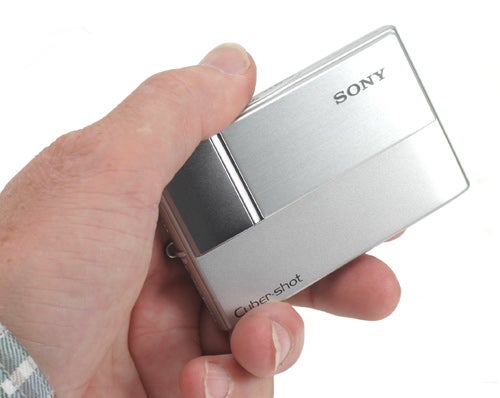
There are a few different colour settings on offer, including the usual Black & White and Sepia options. But the T10 also offers Natural, Vivid and Normal settings – switching to the Vivid setting resulted in deeper and richer colour tones, but whether the overall effect is more pleasing than the default Normal setting is debatable.
There’s a multitude of Scene modes available too – Twilight, Twilight Portrait, Soft Snap, Landscape, Snow, Beach, High-Speed Shutter, Fireworks and High Sensitivity. Obviously these modes are useful in the right circumstances, but in reality, none of these make up for the complete lack of manual control.
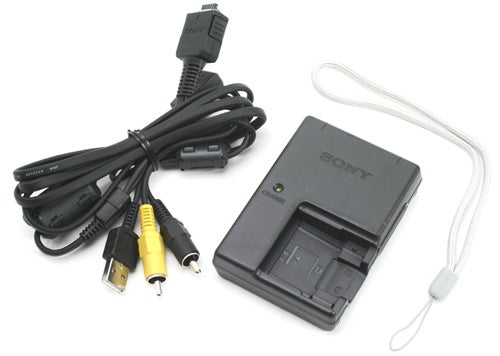
Image quality is a bit of a mixed bag. As already mentioned, you’ll be noise free up to 200 ISO and the Super Steady Shot functionality should mean that you won’t have to dial things up much higher than that too often. The macro setting can also produce impressive results for a camera this compact. However, I did notice that the colours sometimes took on a garish look, no matter what colour setting I employed. Also, the flash had a habit of washing out detail on some shots, while being perfectly balanced on others. And because you’re constantly at the mercy of the T10’s automatic exposure settings, you have no real way of telling exactly what you’ll get.
Cost wise, you can pick up the T10 for about £211 on the street, which pitches it around £40 cheaper than the Canon Ixus 850 IS. But for that extra cash you’re getting manual shutter priority up to 15 seconds, a longer focal length with a wider wide end, better noise reduction at higher ISO settings and a body just as desirable as the T10.
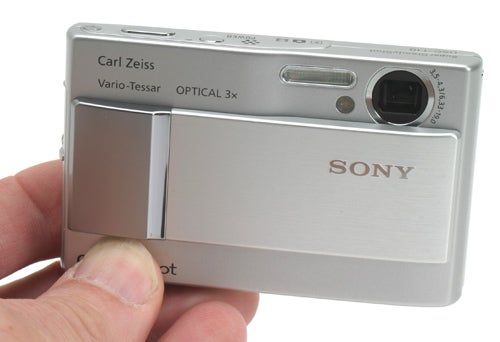
”’Verdict”’
The Sony Cyber-shot DSC-T10 is a lovely little camera, it really is, but unfortunately it stumbles in some key areas. The complete lack of any manual control limits creativity, meaning that this isn’t a camera for an enthusiastic amateur to learn with. The position of the lens also spoils the ergonomics somewhat and anyone with large hands will definitely find it difficult not to get their fingers in the frame. But the biggest problem for the T10 is the Canon Ixus 850 IS – it’s more ergonomically sound, has a far better feature set and is every bit as sleek and stylish as the Sony.
A range of test shots are shown over the next few pages. Here, the full size image has been reduced for bandwidth purposes, and a crop taken from the original full resolution image has been placed below it in order for you to gain an appreciation of the overall quality. The following pages consist of resized images so that you can evaluate the overall exposure. For those with a dial-up connection, please be patient while the pages download.
—-


At 80 ISO the image is completely clean, without the slightest hint of CCD noise.
—-

At 100 ISO things are still looking very good.
—-

Pushing the ISO up to 200 still produces a noise free image without any detail lost through noise reduction.
—-

At 400 ISO the image doesn’t look quite so pristine, but it’s still more than usable.
—-

Now we’re starting to see a significant amount of noise enter the frame, along with a distinct loss of detail.
—-

At 1000 ISO the image is unusable with a massive amount of detail lost as the noise reduction fights to keep things under control..
—-
This page consists of resized images so that you can evaluate the overall exposure.

The powerful flash managed to bring out all the detail in my cat’s coat, despite the room being almost completely dark.
—-

The magnifying glass macro setting really does let you get close to your subject.
—-
This page consists of resized images so that you can evaluate the overall exposure.
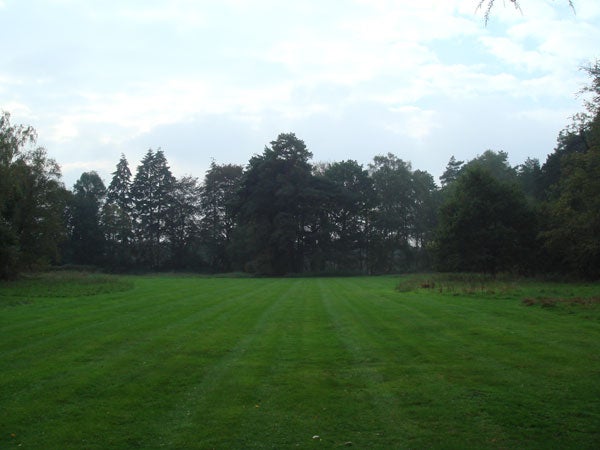
The 38mm wide end of the lens is good enough for landscape shots, but the Ixus 850 IS has a 28mm wide end.
—-
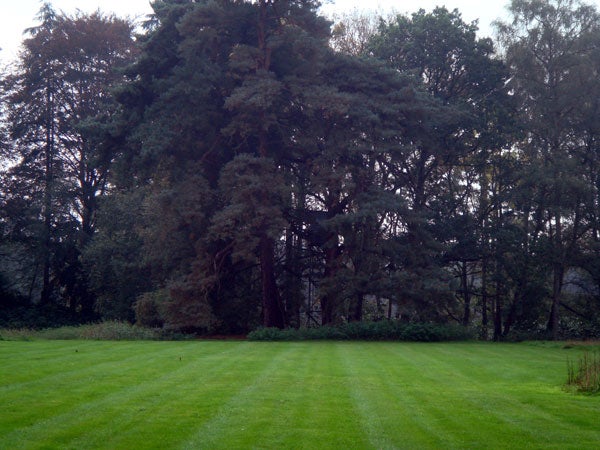
Taken from the same spot as above, the 3x zoom lets you get close, but not as close as many rival cameras.
—-
This page consists of resized images so that you can evaluate the overall exposure.
—-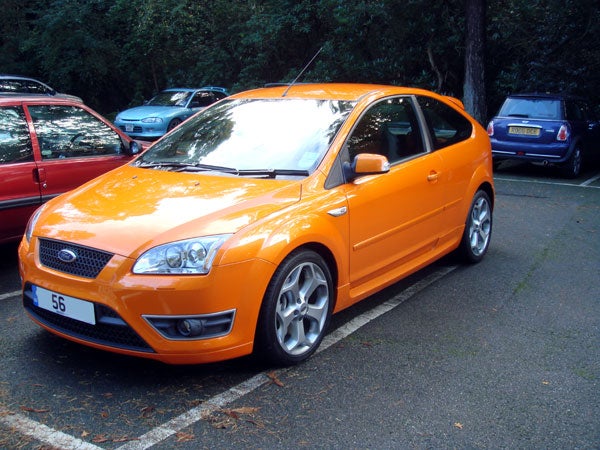
If you saw this car in the flesh you could say that the result from the Normal colour setting is slightly washed out.
—-
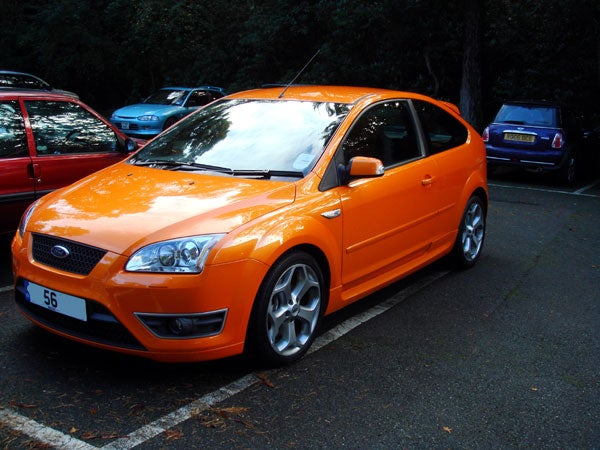
The Vivid colour setting certainly makes the Electric Orange paint look richer, but it also gives the whole image a slightly darker cast.
—-
Trusted Score
Score in detail
-
Value 8
-
Image Quality 7
Features
| Camera type | Digital Compact |
| Megapixels (Megapixel) | 7.2 Megapixel |
| Optical Zoom (Times) | 3x |

